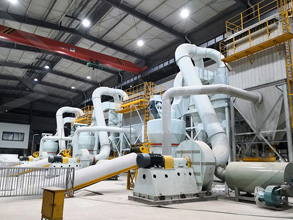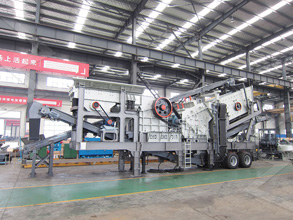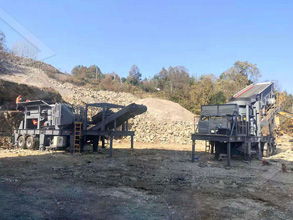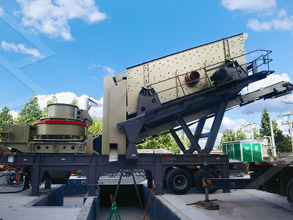

2018年12月11日· Crushed rock aggregate is produced from hard, strong rock formations including igneous (andesite, basalt, diorite, gabbro, granite, rhyolite, tuff), metamorphic (hornfels, gneiss, quartzite, schist) and sedimentary (sandstone,2021年10月3日· The production of crushed rock aggregate involves the process of mining known as quarrying and it also has some environmental impacts such as noise(PDF) Production and Uses of Crushed Rock Aggregate

2007年1月1日· The US aggregate industry produces ∼ 11 billion tons of crushed stone per year with carbonates and granites accounting for 71% and 16%, respectively (USGS,demand, larger stones are processed in an impact crusher to create crushed rock aggregate It is distinct from gravel which is produced by natural processes of weatheringProduction and Uses of Crushed Rock Aggregate from Intrusive

Sand and gravel production in 1959 was 67% of the total with crushed rock providing the balance of 33% By 1998 this situation had changed significantly with crushed rock2021年11月22日· Introduction Construction aggregates derived from primary resources either by crushing of sound rock masses (crushed stone aggregates) or from naturallyGeomaterials as construction aggregates: a stateoftheart

The annual production of aggregate worldwide for construction projects totals about 15 billion metric tons (Julie, 2013)Crushed rock, sand, and gravel are the most importantAs a general rule of thumb, the softer the rock the better the cubicity of the crushed aggregate Fine crystal structures usually indicate hard rock with the clear trend towardsFACTORS INFLUENCING THE PRODUCTION OF HIGH QUALITY

WRAP (2010) identified 435 million tonnes of hard inert CDEW recycled in England in 2008 alongside a further 92 million tonnes of soils Secondary aggregates are byproducts of2021年2月5日· In general, crushed stone production consists of three stages: extraction of raw materials, crushing, and sorting by fractions Crushed stone is obtained quiteExperimental study of crushing process of the crushed stone

MSand is extracted from a specific hard rock (granite) utilizing cuttingedge international technology, resulting in the needed sand property Disadvantages of Crushed Sand: The angular grain or flaky particles produced by poor crushing may necessitate more water and cement, rendering it unsuitable for concrete production1993年1月1日· PDF | A new theoretical/empirical model has been developed for performance prediction of hard rock TBMs The model uses information on the rock| Find, read and cite all the research you need(PDF) New model for performance production of

Crushed stone or angular rock is a form of construction aggregate, typically produced by mining a suitable rock deposit and breaking the removed rock down to the desired size using crushers It is distinct from naturally occurring gravel , which is produced by natural processes of weathering and erosion and typically has a more rounded shapeLimestone and Other Crushed Rock Production and Energy Consumed by Type a Units 1987 1992 1997 Limestone and Rock Production b Billion tons 12 12 Energy Consumption Coal Thousand tons Withheld 785 430 Fuel oil c Million bbl 36 34 40 Gas Billion Cubic Feet 17 32 54Limestone and Crushed Rock Department of Energy

2023年7月21日· Crushed Gravel #2: Approx 1½ ″ to 3″ Wide Crushed rocks in grade no 2 usually range from 1½ inches to 3 inches in diameter, so, depending on your supplier, may contain larger gravel stones that, like #1, are not easy to work with and will need to be moved as individual pieces Uses of gravel #2 include the following:The DePaul Group owns and operates four hard rock quarries in southeastern Pennsylvania, supplying millions of tons of stone to customers and producing aggregates for a wide variety of highway, commercial and residential projects Our facilities produce the highestquality crushed stone and we are fully equipped to fulfill and distribute ordersCrushed Stone in Pennsylvania | DePaul Construction & Material

2014年9月16日· aggregate production are crushed hard rock materials, approximately 900 million tonnes will be in the size range <4 mm — and probably at least half of this will have to2019年1月15日· There are two economic sources of lithium; brines and hard rock ores The majority of the global lithium production, greater than 60%, is produced from brines while lithium ores accounted for the remaining production (Ebensperger et al, 2005)Table 1 summarises the world’s major lithium producers from ores and brines, and the totalThe beneficiation of lithium minerals from hard rock ores: A

Underground hardrock mining refers to various underground mining techniques used to excavate "hard" minerals, usually those containing metals, [1] such as ore containing gold, silver, iron, copper, zinc, nickel, tin, and lead It also involves the same techniques used to excavate ores of gems, such as diamonds and rubies2017年7月1日· Information was collected from eight of the ten regions of the republic of Ghana It was clear thatthe annual production of crushed rock in Ghana does not meet its demand sincethe average annualCrushed Rock Aggregates: Production and Consumption Level in

A limestone quarry 10 mm graded crushed basalt rock or aggregate, for use in concrete, called "blue metal" in Australia 20 mm graded aggregate A gravel and sand extraction facility in Međimurje County, Croatia Chipseal aggregate on Ellsworth Road in Tomah, Wisconsin Construction aggregate, or simply aggregate, is a broad category of coarse2022年12月1日· Production continues to grow as demand for construction materials increases Statistical information on production is provided in Victoria's minerals, petroleum, and extractive industries statistical reviews Hard rock Hard rock refers generally to rock that is blasted in quarries, and commonly crushed and screened before useConstruction materials Resources Victoria

SECTION 812 PRODUCTION OF CRUSHED ROCK FOR PAVEMENT BASE AND SUBBASE ##This section crossreferences Sections 175, 304, 801 and 818 If any of the above sections are relevant, they should be included in the specification If they are not included, all references to those sections should be struck out, to ensure that theCrusher A crusher is a machine designed to reduce large rocks into smaller rocks, gravel, sand or rock dust Crushers may be used to reduce the size, or change the form, of waste materials so they can be more easily disposed of or recycled, or to reduce the size of a solid mix of raw materials (as in rock ore ), so that pieces of differentCrusher

production of the top 100 companies was 122 Gt (87% of the national total) the combined production of the leading 282 companies was 125 Gt of crushed stone, meaning that 20% of the companies produced 89% of the total sales in 2018 Production of crushed stone, by type, is detailed below Calcareous Marl—the output of calcareous marl decreased2020年6月1日· The construction of long tunnels has created a surplus of hard rock resources in several road and railway construction projects Large volumes of blasted rock are available at tunnel construction sites, and the production of primary crushed aggregates provides an affordable construction material with low CO 2 emissions fromInfluence of jaw crusher parameters on the quality of primary crushed

2021年2月5日· In general, crushed stone production consists of three stages: extraction of raw materials, crushing, and sorting by fractions Crushed stone is obtained quite simply by crushing various rocks, such as gravel, boulders, and various simultaneously mined interfering rocks or waste from nonconditioning2017年5月18日· A model for global supply of sand, gravel and cut stone for construction based on a system dynamics model was developed for inclusion in the WORLD6 model The SandGravelStone model simulates production and market supply, demand and price for natural sand and gravel, sand and gravel from crushed rock and cut stone The modelA Simple System Dynamics Model for the Global Production

Contacts National Minerals Information Center Phone 7036486473 Statistics and information on the worldwide supply of, demand for, and flow of the mineral commodity crushed stone2017年2月13日· One of the most important deformational characteristics of rocks is the stressstrain modulus, which characterizes medium contractibility of crushed ore in particular The purpose of the present work is to determine the stressstrained modulus of uraniumbearing hard rock of various granulometric composition with the helpTHE ESTIMATION OF DEFORMABILITY OF CRUSHED HARD

2018年8月19日· Hard rock lithium deposits range in head grade from 04% Li 2 O in low grade deposits [ 4 ], to as much as 4% Li 2 O in higher grade deposits [ 5 ] Hard rock lithium ore is used to produce either technicalgrade or chemicalgrade lithium concentrate, based on the intended end use, the impurities in the spodumene crystal structure (mainlySuppress weeds; Improve crop quality and flavor; and Increase brix Rock dust is also a great additive to acidic soils, as it can help increase soil pH, thus reducing acidity Acidity in soils, whether natural or induced byRock Dust Can Improve Our Soils | EcoFarming Daily

2015年2月4日· This can be described as a sort of “chain”, starting with rock blasting in a hard rock quarry, advancing to rock crushing and screening, then continuing to a readymix producer, and finally ending up at theCrushed hard rock materials of various sizes; Natural rounded single sized gravels; Fine aggregates (0/4 Dust, 0/2, 0/4 Sand) Single sized and graded crushed aggregates (2/63, 4/10, 10/14, 14/20, 20/315 etc) Agricultural lime to the Department of Agriculture specification; Crushed fill materials of various sizes; Drainage materials (NRABulk Aggregates Our Products Kilsaran International

2007年1月1日· Aggregate manufacturing typically starts by blasting rock masses and is followed by a series of crushing stages Comminution in typical hard rock quarries is sketched in Fig 1ASTM particle size distributions of select aggregate products are also shown in Fig 1 (ASTM, 2000)Crushing operations can accommodate some adjustmentSand and gravel production in 1959 was 67% of the total with crushed rock providing the balance of 33% By 1998 this situation had changed significantly with crushed rock production increasing substantially to 132 million tonnes (60%) and sand and gravel only to 86 million tonnes (40%)1 Introduction | AggregatesSand, gravel and crushed rock

US crushed stone production: Value of crushed stone produced in 2015, by state This map shows major production sites as black dots, and states are ranked according to their production of crushed stone on a dollarvalue basis during calendar year 2015 The histogram across the bottom of the image shows the states in rank order [6]Crsine HTML Template For Car Services Stone Mining Industry(flow Chart) comprehensive industry document stone nov aggregate crushing plant iron hard rock mining for gold flow chart stone crushing iron ore mining process flow chart gold mining and production flow chart gold mining and production flow chart is manufactured fromflow diagram for production of crushed hard rock

2022年12月1日· The experimental work was divided into two phases; the first phase investigated the crushed limestone, white hardrock, and basalt aggregate materials with a nominal maximum aggregate size of 19 mm The second phase studied the replacement of crushed limestone, by weight, with the RAP and RCA at different asphalt cement contents2020年3月11日· The production of aggregate for the infrastructural development of the country has been increasing for the last three decades due to the high urbanization rates in the main cities of the country and the evergrowing demand for basic infrastructural facilities The environmental impact of both fine and coarse aggregate production is now hard toEnvironmental Impact and Sustainability of Aggregate Production in

2017年5月18日· A model for global supply of sand, gravel and cut stone for construction based on a system dynamics model was developed for inclusion in the WORLD6 model The SandGravelStone model simulates production and market supply, demand and price for natural sand and gravel, sand and gravel from crushed rock and cut stone The model2023年12月4日· Mining is defined as the extraction of valuable minerals or stone (mineral resources) from the earth, usually from an ore body, vein, or bed Materials mined in Arkansas include base metals, iron, vanadium, coal, diamonds, crushed and dimension stone, barite, tripoli, quartz crystal, gypsum, chalk, and bauxite Mineral resources areMining Encyclopedia of Arkansas

in road construction (40% of the total crushed rock sold), where it is either coated with bitumen in asphalt or used uncoated A further 15% of crushed rock is used in concrete Concrete is made from a mixture of water, air, cement, coarse aggregates (natural gravel, crushed limestone or other hard rock) and fineDolese is Oklahoma’s largest and oldest producer of crushed stone and is consistently ranked as one of the top 20 aggregate producers in the country Our crushed stone products range in size from riprap – large, broken stones used to line lake shores, rivers and creeks for erosion control – to aglime, a fine limestone dust used by farmersDolese | Crushed Stone

2021年11月22日· Construction aggregates derived from primary resources either by crushing of sound rock masses (crushed stone aggregates) or from naturally occurring unbound clastic sediments (natural sand and gravel aggregates) make the most voluminous mineral raw material exploited by humans nowadays (Fookes 1991; Přikryl2016年3月5日· steels the forcedeformation diagram is as shown in Fig 4, and for hard rock the diagram becomes as shown in Fig 5 The Nissen stamp has crushed 5½ tons with an estimated horsepower of 444 or 2175 x 5½/444 = 2694 while the 5 stamp unit has crushed 2¼ tons with 336 hp orCrushing Energy & Work of Crushing Machines 911 Metallurgist

Registration of RC 50002 Crushed Rock Mixes June 2017 1 Introduction This Code of Practice describes the process to be undertaken when registering any crushed rock mix (including cement treated crushed rock) for use in conjunction with relevant VicRoads Standard Specification for Roadworks and Bridgeworks (including Sections 812, 815 andDESCRIPTION This section covers the durability, hardness and, where applicable, the polished stone value requirements of sources (including recycled materials) used for the production of crushed rock and aggregates The requirements for pyroclastic rocks (scoria) are covered in Section 818 The requirements for gravel, sand and soft or rippedSECTION 801 MATERIAL SOURCES FOR THE PRODUCTION OF CRUSHED ROCK

An in situ rock mass located in an operating quarry or a part of a quarry The rock mass which is used or proposed to be used in the production of crushed rock or aggregate The rock mass can be igneous, metamorphic or sedimentary rock (c) ‘Non Quarry’ Granite or Sedimentary rock shall comply with LAV values listed under quarry source rockGravel (largest fragment in this photo is about 40 mm (16 in)) Gravel (/ ˈ ɡ r æ v əl /) is a loose aggregation of rock fragmentsGravel occurs naturally on Earth as a result of sedimentary and erosive geological processes; it is also produced in large quantities commercially as crushed stone Gravel is classified by particle size range and includesGravel
